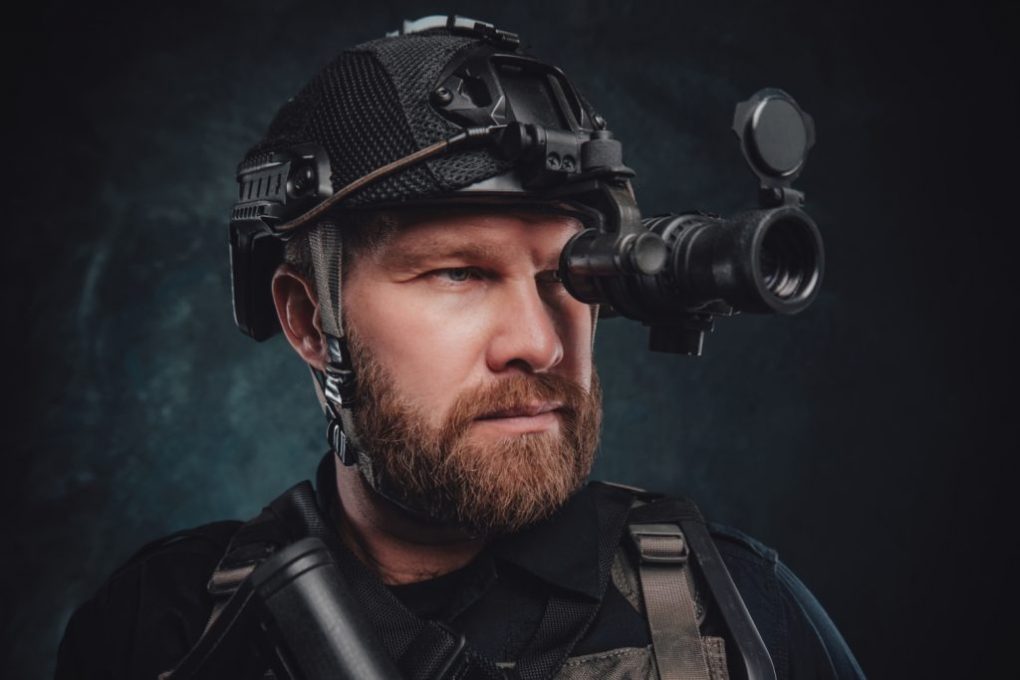Night vision goggles and other such devices are powerful and capable of enhancing military and law enforcement operations and law enforcement. Night vision equipment is also useful for civilian pursuits, such as surveillance, hunting or similar activities, and helps with night blindness. Nature enthusiasts may also learn to use night vision to enhance their experience outside.
If you’re a night vision user, it’s important to learn how the technology works and how to take good care of your equipment.
Know Your Equipment
First and foremost, it’s important to understand how night vision works. So how does night vision work?
NVDs have a couple of different ways of working to improve the user’s vision in low light situations. Night vision scopes are equipped with a whole array of tools to improve sight in the darkness. Knowing how night vision goggles work (and other types of devices) can help equip you to troubleshoot if issues occur down the road.
Image Enhancement
The most basic way that night vision functions is by using image enhancement technology. Any given device is equipped with image intensifiers to capture and enhance what visible light there is in a dim light situation so that the operator can effectively see. These image intensifier tubes require at least a small amount of available light to function, of course, so on a moonless night, especially if it’s cloudy, it’s possible that your night vision goggles may not perform very well. That’s where thermal imaging technology comes in.
Thermal Imaging
Another associated method of night vision technology is thermal imaging. This is the detection of radiation on the infrared spectrum from an object so that it can be better perceived in the dark. This imaging is achieved by equipping any given night vision device with an IR illuminator. This kind of illuminator will essentially detect the infrared light emitted from individuals (or objects) that isn’t visible to the naked eye.
The key difference between thermal imaging and image enhancement, then, is that thermal imaging doesn’t rely on light and can succeed even in especially dark areas, especially if there are particularly hot objects in view. This special imaging is key to being able to see in the dark when the image intensifier tech would need more light.
Different Devices
There are also many different kinds of night vision devices. A night vision monocular, for example, has only one night vision image tube, which makes it more compact and easier to use in certain situations.
Night vision goggles have two such image tubes. Goggles are typically more efficient to use but have a greater cost associated due to having more than one image tube built in.
Protect Your Equipment
In addition to understanding how night vision works, it’s also important to know how to maximize your equipment’s performance and life by taking good care of it. Though they are more accessible than ever before, night vision goggles and other devices are not cheap, so you’ll want to take the right measures to protect them and prolong their life as much as possible.
Avoid Bright Light
First and foremost, avoid bright light exposure. Most NVDs are now equipped with sensors that will automatically turn off the lens if the ambient light around it is too bright, but damage can still occur. The damage is manifested as burns on the lens that may become permanent and get in the way of effective sight. Sometimes these burns will work themselves out of a device, but not always.
Avoid Humidity and Moisture
Most night vision devices can be damaged by moisture or even humidity, so try to avoid it at all costs. Whether you’re working with goggles, a camera, or another piece of equipment, do your best to protect it from moisture or high humidity.
Turn Off Your Equipment
Don’t leave your devices on for long periods of time without moving them or turning them off. By doing so, you might cause a burn similar to what might happen to a computer screen when left with the same thing on the screen for too long. Be sure to turn off your NVDs when you aren’t using them.
Consult Your Owner’s Manual
Night vision devices typically come with robust owner’s manuals that can help you understand and troubleshoot problems and make sure the gear is working properly. Consult it regularly to answer questions you may have about the power supply, camera lens aspects, and other related things. Reach out to the manufacturer if something breaks to get it repaired by a professional.
Buy Quality Night Vision Gear
Don’t settle for subpar equipment that might compromise the effectiveness, efficiency, and success of your operations and expeditions. To find the high quality night vision devices you and your team require, contact us at Steele Industries to find out how we can connect you to the right gear.


